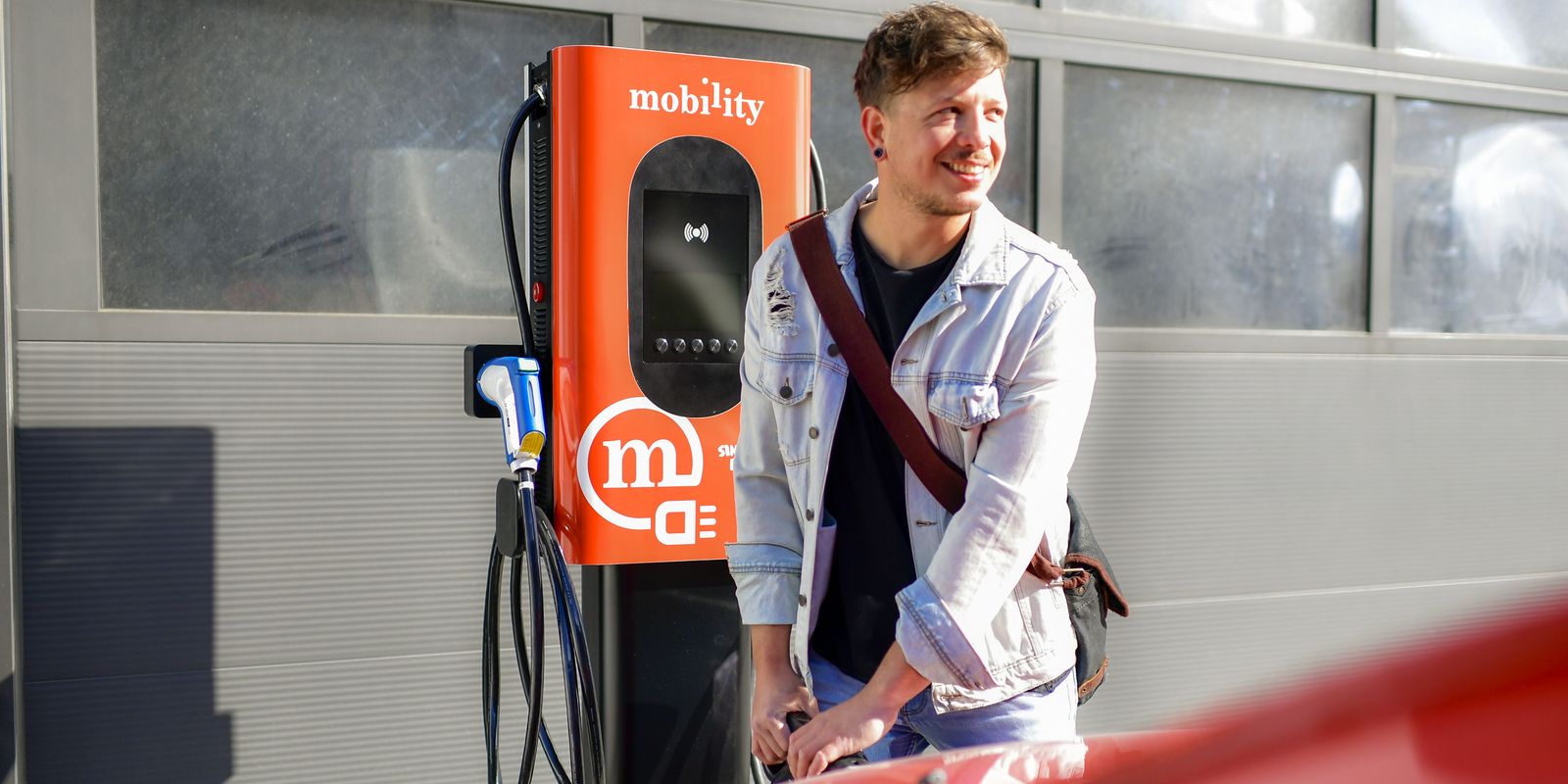Electric vehicles are the future – and that applies to Mobility, too: by no later than 2030 we plan to ensure that all of our 3’000 vehicles run on electric power alone. That’s great for the environment – but it does pose some challenges in terms of power consumption and grid stability. An EBP study shows that if 60% of car traffic runs on electricity in twenty years’ time, the power demand of e-cars will be around 6.5 TWh – or 11% of today’s electricity consumption in Switzerland. This may not sound like much at first, but if you consider that the Beznau, Gösgen and Leibstadt power plants together produce a total of 22 TWh of energy and are to be taken off the grid by then, you can begin to see the implications.
« The electromobility of the future is shared, bidirectional and grid-serving. »
Mobility launches project with various partners from scratch
The newly founded V2X Suisse project is now joining forces to tackle this challenge. Mobility is working with car manufacturers (Honda), software developers (sun2wheel AG), charging station developers (EVTEC), flexibility buyers (tiko), scientists (Novatlantis and ETH) and the federal government (Swiss Federal Office of Energy). “Together, we will put bi-directionally charging cars on the road as quickly as possible. This will enable us to gain much-needed experience,” explains Marco Piffaretti, project manager of V2X Suisse and electromobility expert at Mobility. He is alluding to the fact that Switzerland currently has very little practical experience when it comes to the technical, regulatory and organisational challenges involved with bidirectional charging. “We’re leading the way as pioneers and we intend to deliver results that will give this technology a boost,” says Piffaretti.

Test with 50 cars
Joint preparations will run until September 2022. From then on, 50 Honda e will be available for hire at around thirty Mobility stations throughout Switzerland for a period of one year. This will be the first time that bidirectionally charging electric cars will be used in day-to-day traffic. As a customer, you won’t notice any of this: the energy is only fed back into the grid for 15 minutes, so you’ll always have enough power for your car-sharing trips.

« Mobility electricity can help overcome bottlenecks. »
It all amounts to quite a bit
The prospects look promising: a Mobility electric vehicle plugged into a bidirectional charging point can feed up to 20 kilowatts of power back into the grid. This would amount to 60 megawatts across Mobility’s entire car-sharing fleet – more than is generated by the Peccia pumped-storage power plant in Ticino, for example. This electrical regulating power helps minimise bottlenecks in the transmission and distribution network, as well as avoiding, reducing or delaying the need for expensive grid expansions. Piffaretti is confident: “The electromobility of the future is shared, bidirectional and grid-serving.” V2X Suisse will be setting a worldwide first by deploying the CCS combined charging system – the European plug standard for direct current.
Ambitious goals
V2X Suisse is has set itself ambitious goals for project completion at the end of 2023. Firstly, it aims to investigate the business potential of bidirectional charging points in Switzerland. Secondly, the idea is to explore how often this technology can be used to break load peaks in the power grid and how sites with solar installations can optimise their own consumption. And thirdly, competition will be put to the test between potential flexibility buyers (Swissgrid, distribution grid operators, and private consumption associations).
V2X SUISSE: TECHNICAL DETAILS
V2X Suisse operates across Switzerland and therefore in varying degrees of “grid quality”. The plan is to set up 25 to 30 stations with a total of 50 Mobility electric cars with bidirectional CCS capability (up to max. +/-20 kW each). Two different types of charging scenarios will be trialled: bidirectional DC charging stations developed specifically for this project by EVTEC featuring double and combinable CCS 2x10kW plugs, and bidirectional DC charging stations with single CCS 1x10kW plug. Both are equipped with ripple control receivers for the distribution grid operators as well as a digital interface. This requires the development of a cloud-to-cloud IT platform to manage the available regulating power for each Mobility EV in quarter-hour cycles; this will offer, allocate, release, directly regulate if necessary and calculate (for billing purposes) the flow of electricity. The cloud-to-cloud solution developed by sun2wheel links the availability inputs of Mobility bookings to the tiko aggregator relevant to Swissgrid.
« What do you think of our idea to tackle the electricity shortage? Write what you think in the com-ments. »
![[Translate to English:]](/fileadmin/_processed_/a/0/csm_V2X_Suisse_Logo_vertikal_Anzeigebild_8a4cdcc2ff.jpg)
Comments